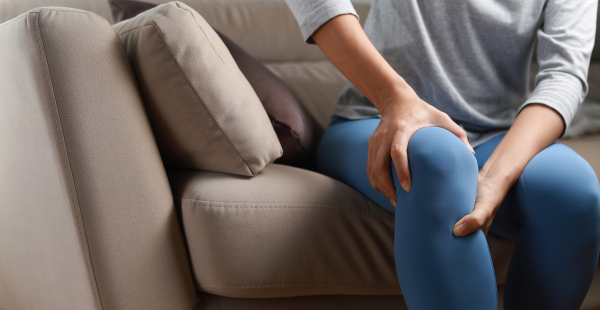Sciatica is a pain that shoots along the sciatic nerve, radiating through the buttocks and down the back of the leg and as far as the foot. The two sciatic nerves (one on each side of the lower body) are the longest in the human nervous system, running all the way from the lower back through the thighs and calves to the feet.

Sciatica is caused by different types of pressure on the sciatic nerve in the lower back or buttocks. It can also be the result of damage to the nerve roots that feed into the sciatic nerve. Sciatica is usually felt only on one side of the body. The pain can occur along the entire length of the sciatic nerve and may sometimes be accompanied by weakness or numbness in the leg.
Pressure on the sciatic nerve can have many causes, some serious and some more minor. Sciatica may be the result of something as simple as bad posture, muscle strain or spasm, pregnancy, being overweight, wearing high heels, or sleeping on a mattress that is too soft. More seriously, it can result from pressure exerted on the sciatic nerve or its nerve roots by a slipped disc in the back.
You may be at increased risk of sciatica if you have a job that involves heavy lifting, twisting your back, or sitting for lengthy periods of time. Age and diabetes also contribute to the risk. As you age, the discs in your back begin to deteriorate. Diabetes can increase the risk of nerve damage.
In some cases, sciatica is due to nerve inflammation caused by a form of arthritis, or is caused by the squeezing of the sciatic nerve by a tumour wrapped around the spinal cord in the lower back (the lumbar spine).
The spinal cord is a soft bundle of nerves that starts at the base of the brain and runs down the middle of the back. It is the main pathway for communication between the brain and the rest of the body. The cord is covered by the protective spinal column (the vertebrae). Nerves enter and exit the spinal cord all the way down its length, passing through small openings between each vertebra. Nerve roots also stick out through these openings, exchanging nerve signals with the rest of the body.
The vertebrae are separated from each other by discs made of cartilage, a substance like bone but softer. Each disc has a tough outside layer and a soft inside part that acts as a shock absorber, cushioning the vertebrae when the body moves around. If the disc is damaged by injury or through aging, the inner part can bulge or slip through the outer layer. The "extruded" or "herniated" inner part of the disc may then compress or inflame a nerve root sticking out between two adjacent vertebrae. The disc may even injure the nerve root. If this happens in the lower back area, it leads to pain travelling down the sciatic nerve in the leg.
Osteoarthritis is another common source of nerve root damage that may cause sciatica. Osteoarthritis is characterized by the formation of bone spurs (bits of protruding bone) that may press on the nerve roots. Sometimes, older people may also develop a condition called spinal stenosis, where the space around the spinal cord narrows and squeezes nerves. More rarely, infections like meningitis or spinal cord tumours can affect the nerves. It’s also possible for the sciatic nerve to be compressed further outside the spinal column in the pelvis or buttocks.
Sciatica can be relieved by treating symptoms and any specific cause that exists, such as a slipped disc. Your doctor may prescribe muscle relaxants, pain relievers such as acetaminophen, or nonsteroidal anti-inflammatory drugs (NSAIDs) to reduce pain and inflammation. Sometimes, symptoms may be decreased by using medications that decrease the efficiency of the nerves sending the pain message. In severe cases, you may need surgery to correct the cause.
Moderate exercise is recommended if pain is minimal. Stretching the hamstring muscles after warming up may ease the pain. When the symptoms have lessened, therapy to strengthen abdominal muscles and back muscles is important to prevent a return of symptoms.
Here are some other things that may help. Many of them are similar to ways of dealing with other common lower back problems:
Although it is not always possible to prevent sciatica, regular exercise has shown to be an effective way to reduce the risk of developing sciatica. You can start with aerobic exercise like walking, swimming, or jogging, and then add specific exercises to strengthen the muscles in the buttocks, legs, and back. Stretching exercises can also help, but people who have back pain should consult a health care professional first. You should also make sure you are in the proper position when lifting heavy objects (bending your knees when lifting) and should avoid sitting or standing in the same position for long periods of time.
All material copyright MediResource Inc. 1996 – 2025. Terms and conditions of use. The contents herein are for informational purposes only. Always seek the advice of your physician or other qualified health provider with any questions you may have regarding a medical condition. Source: www.medbroadcast.com/condition/getcondition/Sciatica
Pharmasave uses cookies to provide a personalized experience, analyze traffic, improve site performance, and provide social media features. By using our site, you agree to our privacy policy.